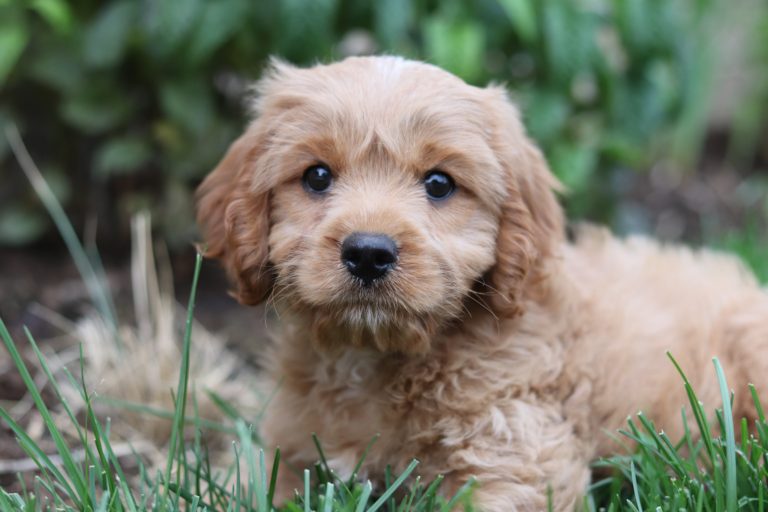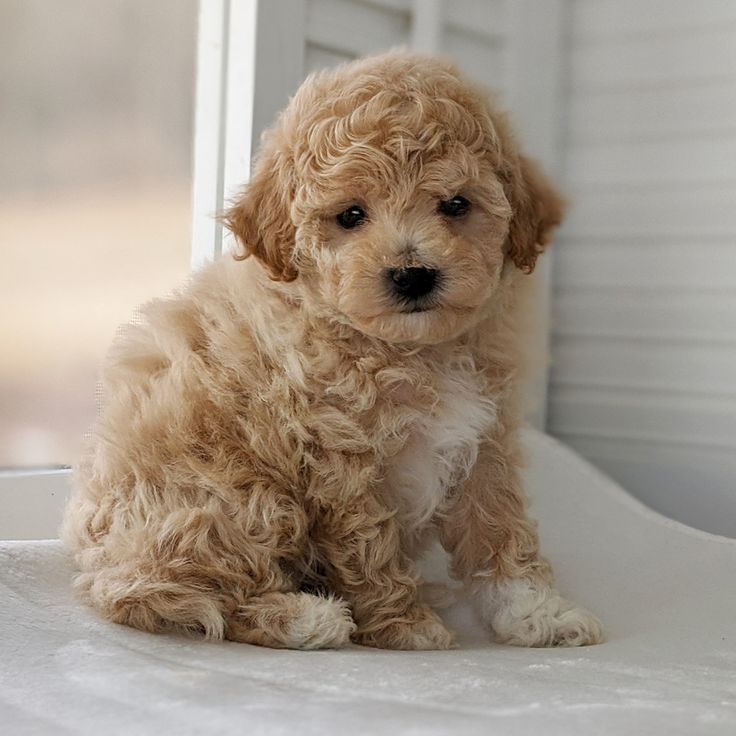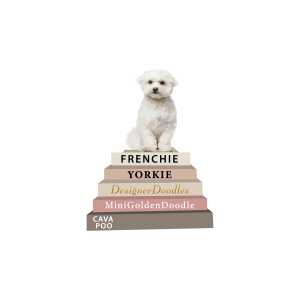About Goldendoodle

Feeding
Recommended daily amount: 1 to 4 cups (depending on adult size) of high-quality dry food a day, divided into multiple meals.
NOTE: How much your adult dog eats depends on his size, age, build, metabolism, and activity level. Dogs are individuals, just like people, and they don’t all need the same amount of food. It almost goes without saying that a highly active dog will need more than a couch potato dog. The quality of dog food you buy also makes a difference — the better the dog food, the further it will go toward nourishing your dog and the less of it you’ll need to shake into your dog’s bowl.
Keep your Goldendoodle in good shape by measuring his food and feeding him twice a day rather than leaving food out all the time. If you’re unsure whether he’s overweight, give him the eye test and the hands-on test. First, look down at him. You should be able to see a waist. Then place your hands on his back, thumbs along the spine, with the fingers spread downward. You should be able to feel but not see his ribs without having to press hard. If you can’t, he needs less food and more exercise.
A Goldendoodle should also be fed several small meals per day instead of one large one, since the Golden Retriever can suffer from gastric torsion, or bloat, a trait that can be easily passed on to any Goldendoodle offspring.
For more on feeding your Goldendoodle, see our guidelines for buying the right food, feeding your puppy, and feeding your adult dog.
History
The Goldendoodle is considered to be one of the newest of the “Doodle,” or Poodle mix, breeds. Breeding began in the 1990s, after both the Cockapoo and the Labradoodle gained footholds. The theory behind the Goldendoodle’s development was to create a larger Doodle that maintained the desired low-dander, low-shedding coat and that possessed the intelligent and friendly nature of the Golden Retriever.
The fact that the Goldendoodle is still a fairly young cross means that most pups are the result of first-generation breeding. That is, most are Golden Retriever and Poodle mixes; as of yet, breeding rarely occurs between pairs of Goldendoodles.
Despite the fact that the Goldendoodle has gained some popularity, especially in Australia, there is still no breed club or registry in existence. There are, however, several online communities for the Goldendoodle lover and owner. The Goldendoodle’s popularity is still on the rise, and many believe that it will surpass that of other Doodle breeds.

Care
The Goldendoodle can be easy to train. Intelligent, he’s usually eager to please — a perfect combination for either first-time trainers or experienced trainers. He should be trained with positive reinforcement, since harsh corrections could damage his confidence.
Socialization is important for all breeds, but for a gentle dog like the Goldendoodle it can be instrumental in discouraging any shyness or timidity.
The Goldendoodle has an average energy level and will require daily exercise through walks or a good romp in the back yard. Generally speaking, 20 to 30 minutes of daily exercise will be enough to keep a Goldendoodle from becoming bored. He’s known for his love of water, so swimming provides another opportunity for appropriate exercise.
Since the Goldendoodle may grow large, he does require room to move. He’s not recommended for apartments but should have a home with some type of fenced yard. He’s not an ideal pet for outdoor or kennel living, since he thrives when he’s with his family, so owners should expect to keep him primarily in the house.
The Goldendoodle can also suffer from separation anxiety, which can lead to destructive behavior, if he’s left alone for long periods at a time.
Living Needs
The Goldendoodle can be easy to train. Intelligent, he’s usually eager to please — a perfect combination for either first-time trainers or experienced trainers. He should be trained with positive reinforcement, since harsh corrections could damage his confidence.
Socialization is important for all breeds, but for a gentle dog like the Goldendoodle it can be instrumental in discouraging any shyness or timidity.
The Goldendoodle has an average energy level and will require daily exercise through walks or a good romp in the back yard. Generally speaking, 20 to 30 minutes of daily exercise will be enough to keep a Goldendoodle from becoming bored. He’s known for his love of water, so swimming provides another opportunity for appropriate exercise.
Since the Goldendoodle may grow large, he does require room to move. He’s not recommended for apartments but should have a home with some type of fenced yard. He’s not an ideal pet for outdoor or kennel living, since he thrives when he’s with his family, so owners should expect to keep him primarily in the house.
The Goldendoodle can also suffer from separation anxiety, which can lead to destructive behavior, if he’s left alone for long periods at a time.

